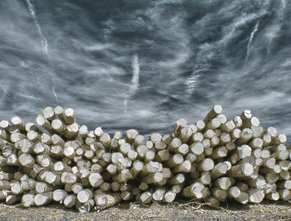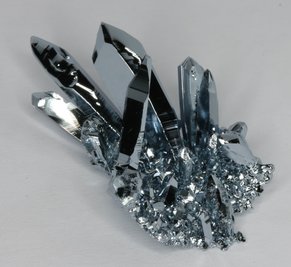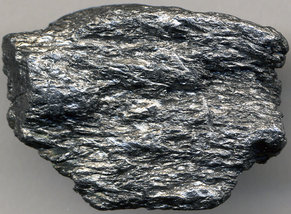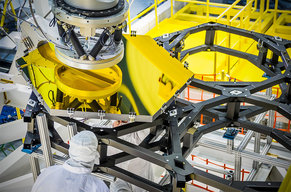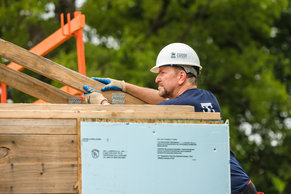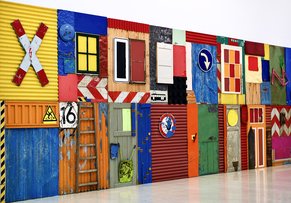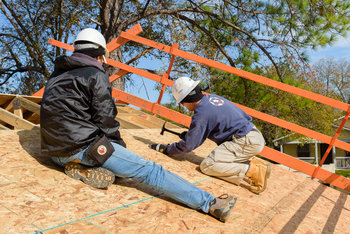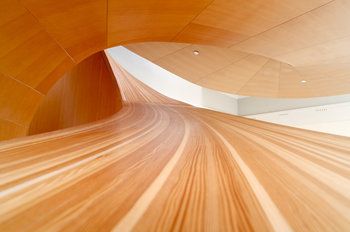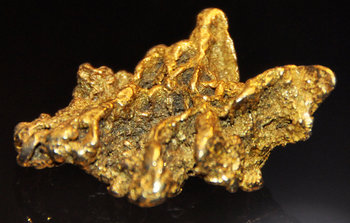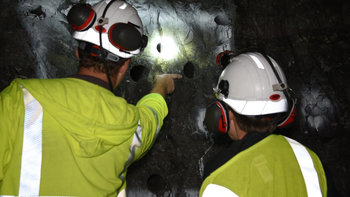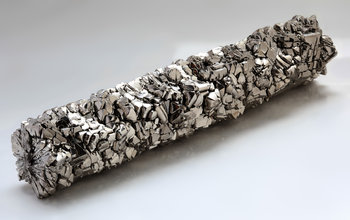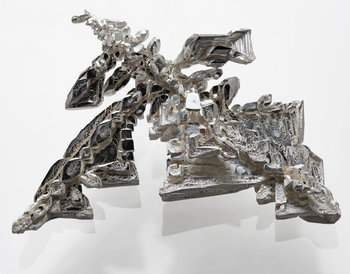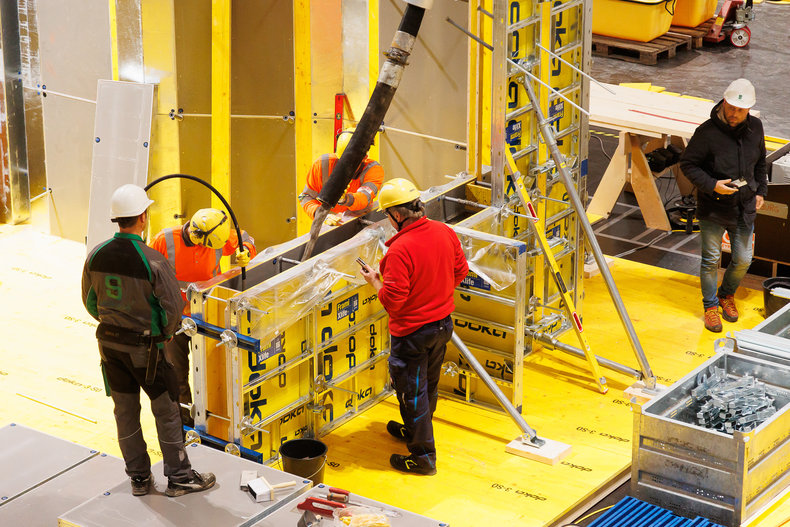
Wood
A hard natural material that has been used for interiors and exteriors for thousands of years. Wood is a sustainable material when responsibly sourced as it is a carbon-neutral renewable resource.Example Uses | Exteriors, interiors, flooring, roofs, decorative elements, load bearing structures, landscaping and fencing. |
Properties | Resists compression, reasonably high tensile strength, pliable, workable and visually appealing. The properties of wood differ greatly depending on the type. |
Notes | Woods are broadly classified into softwoods and hardwoods based on tree species. This is somewhat misleading as hardwoods aren't necessarily harder than softwoods. |
Engineered Wood
A broad range of manufacturer products that use wood as a material. Some of these products are simply designed to be cheaper alternatives to natural woods. Others are designed to have superior strength to wood or have other desirable properties such as improved rot resistance. Engineered wood can be designed to be a more sustainable replacement for wood varieties that are often sourced from unsustainable sources that result in the destruction of ecosystems.Example Uses | Exteriors, interiors, flooring, roofs, decorative elements, load bearing structures, landscaping and fencing. |
Properties | A broad category of hundreds of products with different properties. Many are designed to be cheaper, stronger or more durable than natural wood. |
Notes | Engineered wood can be both far cheaper and far more expensive than natural wood. For example, products produced with attractive wood veneer may be viewed as superior in quality to natural wood. |
Bamboo
Bamboo is a family of plants that is perceived as wood but is technically a grass. Bamboo is viewed as a sustainable material due to its high rate of growth with some species growing up to 1.5 inches an hour.Example Uses | In some cultures, natural bamboo is used for scaffolding and as load bearing elements of small structures. Premium engineered bamboo is viewed as comparable to high quality hardwoods and is used for flooring and cabinetry. |
Properties | Generally speaking, bamboo has higher compressive strength and tensile strength than wood and is lighter. |
Notes | Bamboo naturally exists as relatively thin poles and is commonly engineered into boards. There are over 1000 species of bamboo. |
Concrete
Concrete is a composite material that contains aggregates such as sand, gravel and crushed stone with a binder such as Portland cement. Chemical admixtures are often added to change the properties of the concrete or to speed up or slow down hardening.Example Uses | Foundations, load bearing structures and sidewalks. |
Properties | Concrete is heavy and has high compressive strength but remarkably low tensile strength. For this reason, it is often reinforced with a material with high tensile strength such as steel bars known as rebar. |
Notes | Concrete is by far the most widely used construction material by weight. It is generally perceived as unattractive and stark as it is associated with utilitarian infrastructure such as highway overpasses and dams. Cement production produces significant greenhouse gas emissions. |
Brick
Bricks are any rectangular units designed to be set in mortar. These are historically made of clay but modern bricks come in hundreds of varieties made from materials such as soil, sand, clay, lime, calcium-silicate, concrete and ceramics.Example Uses | Walls, pavement and fireplaces. |
Properties | Many bricks have high compressive strength with extreme durability and heat resistance that can be compared to stone. Bricks can be brittle and may break when dropped. In areas prone to earthquakes brick walls need to be properly reinforced according to local standards. |
Notes | Bricks have two main types: fired and unfired bricks. |
Glass
A durable but brittle material that is valued for its optical properties such as its ability to refract, reflect and transmit light. Glass is often designed to be transparent or translucent. Most glass contains silicon dioxide and is manufactured in thousands of varieties. A strong type of frameless glass known as structural glass can be used in load bearing structures.Example Uses | Windows, facades, walls, roofs and floors. |
Properties | Valued for its optical properties, particular its transparency. Glass is durable but brittle and is prone to fracture. Treatments such as laminates can make glass less brittle. |
Notes | Glass comes in many varieties that include materials such as fiberglass, glass-ceramics and fiber optics. |
Ceramics
Ceramics are a broad category of hard inorganic material manufactured using minerals. Most tranditional ceramics are non-metallic. However, some materials made from combinations of metals and minerals are considered ceramics. Traditional ceramics include earthenware, stoneware and porcelain. Modern ceramics include silicon nitride, silicon carbide and titanium carbide.Example Uses | Bricks, fireplaces, chimneys, mortar, decorative features, countertops, sinks, tubs, bathrooms and kitchen tiles. |
Properties | Ceramics are often hard, durable, water, heat and fire resistant. Modern engineered ceramics such as titanium carbide and tungsten carbide are amongst the strongest known materials. |
Notes | Production of ceramics often requires high temperatures. As such, ceramics can be energy intensive and expensive. However, they are often extremely durable. |
Steel
Steel is an alloy of iron and carbon. It is also common to add other metals to steel to improve its properties. For example, stainless steel includes chromium and nickel to improve the corrosion resistance of the metal. Steel began to replace cast iron as the structural metal of choice for large structures at the end of the 19th century. Steel is also used in a large number of construction materials, parts and components.Example Uses | Structural steel, reinforcing bars, decorative elements, sheet metal, wires, pipes, bolts, nails and screws. |
Properties | The properties of steel differ based on its carbon content, metal content and manufacturing processes. Generally speaking, it has high compressive and tensile strength. Steel is durable, highly recyclable and has good thermal conductivity. Stainless steel resists corrosion. |
Notes | Steel is not combustible but can lose strength in a fire. As such, most structural steel must be fireproofed. |
Carbon Fiber
Carbon fibers are a relatively new material that have interesting material properties for construction including high tensile strength, chemical resistance and low thermal expansion. These are often used in composite materials such as fiber-reinforced concrete and carbon fiber reinforced plastic where fiber is used for its superior tensile strength.Example Uses | Used to improve the strength of concrete, wood, plastics and masonry. |
Properties | Carbon fiber has a far higher tensile strength than most known materials. For example, its tensile strength is more than 5x that of steel. Other carbon-based materials are even stronger. For example, graphene has a tensile strength of around 18,854,905 Psi compared to steel at approximately 77,015 Psi. |
Notes | Carbon nanotubes and graphene are far stronger than carbon fiber and are likely to become important construction materials in the future. |
Copper
Copper has been used in architecture since at least the 3rd century BC. It is valued for its superior qualities in areas such as thermal conductivity and corrosion resistance. Copper is also viewed as a visually attractive metal with a lustrous reddish-gold color and a bright green patina that forms with exposure to the elements.Example Uses | Roofs, gutters, pipes, wall cladding, building expansion joints, wires, radio frequency shielding and lightning protection. |
Properties | Durable, corrosion resistant, low thermal expansion, low maintenance, antimicrobial and highly recyclable. |
Notes | Copper surfaces form a characteristic green patina coating with time that provides corrosion resistance. In the absence of harsh conditions such as pollution and salt, copper corrodes at a rate of less than 0.4 mm in 200 years. |
Aluminum
A lightweight and durable metal that has a large number of specialty uses.Example Uses | Exterior panels, facades and window frames. |
Properties | Light, ductile, malleable, corrosion resistant, nonmagnetic, thermal conductor, electrical conductor. |
Notes | Aluminum is corrosion resistant due to the formation of a layer of aluminum oxide when exposed to air. Aluminum is highly reactive and is not resistant to a wide variety of chemical exposures such as salt. This is the reason it is not typically used in plumbing. |
Plastic
Plastic is a category of synthetic material derived from petrochemicals or renewable biomass sources. It is an inexpensive material that is formulated and shaped into a very large number of construction products.Example Uses | Pipes, flooring, roofing, siding, windows, doors and interior panels. |
Properties | Cheap and available in significant variety. Plastics are often lightweight, durable, flammable and sensitive to temperature. They can be reasonably strong for most applications but aren't typically used for load bearing structures. Often used as a coating or covering for other materials. |
Notes | People may have negative perceptions of plastic including the idea that plastic materials are "fake." |
Foam
Foams are materials that include trapped pockets of liquid or gas. These are often sold as panels, blocks or sprays.Example Uses | Insulation, sound dampening and fire retardant treatments and barriers. |
Properties | Foam is a broad category of material that is often lightweight. |
Notes | Currently, many common foams are made with petrochemicals. However, it is also possible to make hard foams from metal, ceramics and other materials. It is likely that these products will become more common with time as they can be engineered to be extremely lightweight and strong. |
Plaster
Plaster is a material that is applied as a decorative or protective coating of interior walls and ceilings. A similar material applied to exteriors is known as render or stucco. Plasters are based on gypsum, lime, cement or clay and are applied as a paste that hardens.Example Uses | Interior walls, exterior walls, ceilings and fireproofing. |
Properties | Easily worked, moulded and finished. Plasters are not strong and are easily damaged. However, they also tend to be easy to repair. Some plasters have fireproofing properties and a thick plaster formulated for this purpose can resist fire for up to an hour. |
Notes | Plaster-like materials are often used in sculpture and art. |
Stone
The craft of using stone in construction is known as stonemasonry. This is an ancient type of construction that is difficult and expensive as compared to modern materials. Stone such as limestone, slate and sandstone are commonly used to repair and restore historical buildings. Visually appealing stones such as granite and marble are used to add luxury features to building interiors and exteriors.Example Uses | Repair of historical buildings, facades, interior walls, floors, bathrooms and countertops. |
Properties | Heavy, durable, hard, high compressive strength, difficult to work and visually appealing. |
Notes | Stonemasonry is amongst the most difficult of the trades that was traditionally a 7 year apprenticeship. Modern apprenticeships are often 3 years. |
Dimension Stone
Dimension stone is natural stone that has been shaped and finished into convenient forms such as slabs, tiles and countertops. This includes products made with a stone veneer fixed to other materials such as wood.Example Uses | Exteriors, flooring, bathrooms and countertops. |
Properties | Dimension stone may be constructed to be lighter than stone with the same appearance using a veneer. They often have a finish that brings out the color of the stone or give the stone desirable properties such as a smooth touch. |
Notes | Dimension stone is valuable, durable and often recycled. As such, there is interest in using it as a sustainable building material. |
Fabric
Fabric is a flexible material consisting of a interwoven pattern of natural or artificial fibers. These are commonly used to meet requirements in areas such as structural strength, fire resistance and weather proofing. Examples of fabrics used in construction include cotton canvas, woven fiberglass, carbon fiber fabric and various plastic-based fabrics.Example Uses | Fire resistance, weather proofing, corrosion resistance, decorative elements and improvements in structural strength. |
Properties | Fabrics are flexible materials that may be engineered to be low cost, strong, fire or weather resistant. |
Notes | Fabrics are commonly used to construct temporary and low cost structures whereby a fabric exterior is mounted to a frame. For example, a tent. |
Paper
Paper is used in common building materials such as drywall. Paper can also be used as a unique or traditional architectural feature such as Japanese fusuma and shoji.Example Uses | Wallpaper, tar paper and shoji. |
Properties | Lightweight and delicate. |
Notes | It is increasingly common for modern Japanese shoji to be made with plastic that resembles paper. |
Minerals
Minerals such as sand, clay and gypsum are used in construction due to their low cost and properties such as fire resistance or compressive strength. For example, drywall made with gypsum and paper that is used for interior walls and ceilings.Example Uses | Drywall, bricks and aggregate for cement and mortar. |
Properties | Minerals may be relatively inexpensive and have desirable properties such as fire resistance or high compressive strength. |
Notes | Minerals are also used in the production of glass and ceramic materials such as tiles. |
Fibers
Natural fibers such as straw and artificial fibers such as fiberglass.Example Uses | Glass fiber reinforced concrete, Japanese tatami mats and fiberboard. |
Properties | Generally speaking, natural fibers such as rice straw are soft and artificial fibers such as carbon fibre are strong. Fibers such as the wood fiber in fiberboard are low cost. |
Notes | Tatami mats are a traditional type of Japanese flooring made with rice straw and soft rush straw. |
| Overview: Building Materials | ||
Type | ||
Definition | Materials that are used in the construction of buildings, houses and other structures. | |
Related Concepts | ||

